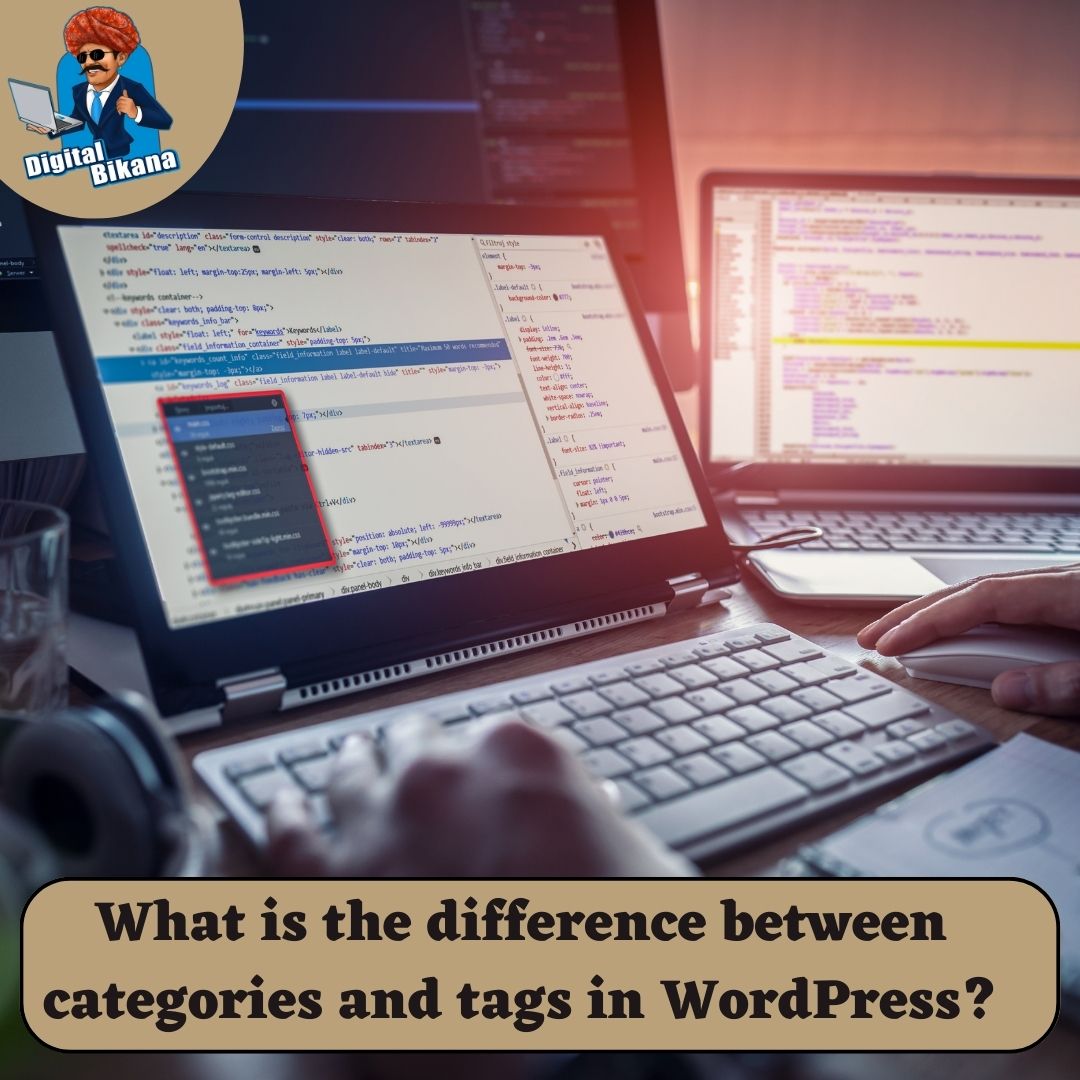What is the difference between Categories and Tags in WordPress?
In this article we are going to talk about the What is the difference between Categories and Tags in WordPress? When it comes to organizing and structuring content on your WordPress website, categories and tags play a crucial role. They allow you to group related posts and make it easier for visitors to navigate and find the content they’re interested in. However, understanding the difference between categories and tags can sometimes be confusing for WordPress users.
What is the difference between categories and tags in WordPress?
In this article, we’ll delve into the details and explain the disparities between these two classification systems.
1. Categories in WordPress
Categories are the primary method of organizing content in WordPress. They are hierarchical and allow you to create a structured taxonomy for your website. Think of categories as broad topics or sections that encompass a range of related posts. For example, if you have a cooking blog, you might have categories like “Appetizers,” “Main Courses,” “Desserts,” and so on.
When you create a new post in WordPress, you can assign it to one or more categories. This helps you maintain a logical structure and ensures that your content is easily discoverable. Visitors can browse through your site using category links or menus to explore posts within specific topics.
One essential characteristic of categories is that they allow for hierarchical relationships. This means you can create subcategories within main categories. For instance, under the “Desserts” category, you might have subcategories like “Cakes,” “Cookies,” and “Pies.” This hierarchical structure enables a more granular organization of your content.
Categories also have their own archive pages in WordPress, which display a list of all the posts assigned to that category. These archive pages can be customized to provide additional information or to showcase category-specific features.

2. Tags in WordPress
While categories provide a hierarchical organization, tags in WordPress offer a more flexible and non-hierarchical way to classify content. Tags are like keywords or labels that you can assign to your posts to describe their specific characteristics or topics in more detail. Unlike categories, tags don’t have a hierarchical relationship.
Tags allow you to highlight specific details about your posts, making it easier for visitors to find content based on specific keywords or themes. Going back to our cooking blog example, you might have tags like “gluten-free,” “vegetarian,” “quick and easy,” or “summer recipes.” By adding these descriptive tags to your posts, you can provide more targeted access to your content.
Read Also: How can you add a blog section to a WordPress website?
Another significant difference between categories and tags is that tags are typically more numerous and specific. While you may have a limited number of categories, tags can be more abundant and varied, reflecting the diverse aspects of your content.
WordPress provides tag clouds, which visually display the most commonly used tags on your website. This feature allows visitors to click on a tag of interest and view all the posts associated with that particular tag. Tag clouds can be placed in your sidebar or footer to facilitate navigation.
Categories vs. Tags: Which to Use?
Now that we understand the characteristics of categories and tags, it’s important to know when to use each one effectively. Here are some considerations to help you make an informed decision:
1. Categories for broad topics
Use categories to organize your content into broad and distinct topics that define the main sections of your website. Categories provide a structured framework for your content and allow for a hierarchical relationship.
2. Tags for specific details
Tags are ideal for describing specific details, characteristics, or themes associated with your posts. They provide a flexible way to highlight keywords and make your content more searchable.
3. Fewer categories, more tags
It’s generally recommended to have a limited number of categories to maintain a clear and concise organization. However, you can have a larger number of tags to cover a wide range of topics and keywords associated with your content.
Read Also: What is a Featured Image in WordPress and how can you set it for your posts?
4. Consistency is key
To ensure a smooth user experience, it’s essential to be consistent in your use of categories and tags. Establish a clear taxonomy and stick to it throughout your website. This consistency will help visitors understand and navigate your content more easily.

5. Consider your audience
When deciding on categories and tags, think about your target audience and their browsing habits. What topics or keywords are they likely to search for? This understanding will help you create relevant categories and tags that cater to your visitors’ interests.
You can also checkout this website designing institute to learn digital marketing course by enrolling in our course Or Contact Digital Bikana on +91-8949483728
Conclusion
Categories and tags in WordPress serve different purposes in organizing and classifying your content. Categories provide a hierarchical structure for broad topics, while tags offer a flexible and non-hierarchical way to describe specific details or themes. Understanding the distinctions between these two classification systems will help you create a well-organized and easily navigable website, enhancing the user experience for your visitors. So, take advantage of both categories and tags to effectively organize your WordPress content and make it more accessible to your audience. So, Now I hope you have understood about the difference between categories and tags in WordPress.

